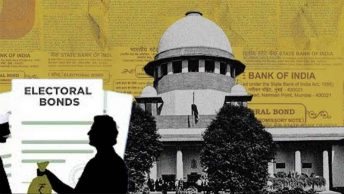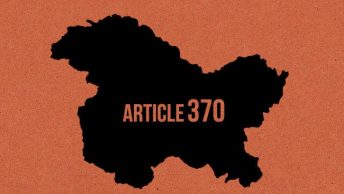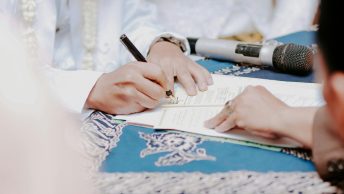Summary: In this article, the arguments raised by the Petitioners and Respondents are summarized. The key contention here continues to remain whether AMU was both established, and administered by the Muslim minority. The first part of this piece dealt with the historical context and important precedents on this issue.
Supreme Court hearings in the current case
Arguments raised by the Petitioners
The first contention raised by the Petitioners was that the Azeez Basha case gave a very restrictive meaning to the term ‘establish’, as opposed to the expansive definition laid down in the Mother Provincial case. They also contended that prior to the Constitution coming into force, most minorities had no choice but to establish with the help of Governments since degrees granted by a private individual were not recognized by governments. Following Azeez Basha would make Article 30 toothless since educational institutions that were required to obtain government recognition would now be stripped of their minority status. They further stressed that the AMU Act only incorporated AMU, but did not establish it. Hence, the mere fact that an institution was set up by a government legislation could not be a sufficient ground to strip it of its minority status.
Moreover, the Petitioners claimed that Azeez Basha was self-contradictory in its reasoning—while it gave the minorities the right to establish a MEI, the institution was immediately deprived of its minority status if its degrees were recognized by a statute. It was also paradoxical for the court to acknowledge the conversion of MAO to AMU by the Muslim community’s efforts and funds, and yet rule that AMU was not established by Muslims.
Furthermore, it was argued that Azeez Basha was now bad law since it had been superseded by the TMA Pai case. In TMA Pai it was held that an institution cannot be stripped of its minority status by a government intervention. The case had also reiterated that an institution would not be stripped of its MEI status merely because it accepted state funds and let members from the non-minority community take up administrative roles. The Petitioners further stressed on the ‘choice’ that minorities have in establishing and administering an educational institution. As held in St. Stephen’s College v. University of Delhi, the fact that the University was administered by someone outside the minority community, alone could not form the basis of depriving it of its minority status.
Lastly, the Petitioners argued that stripping AMU of its minority status would be against the tenants of Article 15, since it would disproportionately affect the career prospects of Muslims. This is because such a move would result in the de-reservation of seats which were exclusively held for Muslims, thereby reducing their chances of obtaining college degrees, and consequently jobs. Such a situation would be especially detrimental for Muslim women, for they are often only allowed to attend Muslim MEIs. To support these arguments, it was emphasized that Article 30 recognized group rights to facilitate affirmative action.
Arguments raised by Respondents
The first contention raised by Respondents was that the power to establish a University must be granted by an enabling statute. Prior to the enforcement of the Constitution, no legislation existed through which a University could be established or a college could be converted into a University. Hence, the minority community which may have established MAO, had no authority to convert the same into AMU.
Moreover, Respondents stated that AMU had made a conscious decision of being a ‘loyalist’ institution under the British government, choosing to be established under an imperial legislation. This was in contrast to ‘nationalist’ institutions which had not succumbed to the British government, and were later recognized by the University Grants Commission. By not choosing to be affiliated to the Allahabad University and instead being established as a separate University through the British government, AMU had clearly denounced its minority status. In particular, they argued that the British government had established AMU only on the pre-condition that it would not be a minority institution and would instead be governed by secular authorities. They corroborated this assertion by depicting that AMU had several non-Muslim donors.
Having argued on how AMU was not ‘established’ by Muslims, Respondents then proceeded to prove that the institution was not ‘administered’ by Muslims either. They stated that when AMU was established, its administration was ultimately under the control of the British. All the governing bodies and authorities of AMU were finally answerable to Lord Rector under Section 13(5) of AMU Act. Additionally, the law never required the administrators of AMU to be Muslims.
Moreover, Respondents argued that being fully funded by the government, and hence compulsory religious education could not be imparted as stipulated under Article 28. Article 28 was to have an overriding effect on Article 30, implying that AMU could not be considered as a MEI. Furthermore, since AMU is included as an institute of national importance, the Union Government has sole rights over it. It was argued that it would be ‘public mischief’ to now overrule Azeez Basha, and take away the Union’s control over the University.
Additionally, it was contended that during British rule, Hindus and Muslims were treated as equals. Hence, Muslims at that time would not qualify as a minority community, although they might be numerically lesser than the Hindus. Although this would mean that any MEI established before the enactment of the Constitution would lose its minority status, this would be a necessary implication since fundamental rights could not be retrospectively applied. Hence, the right under Article 30 to establish a MEI could not be extended back to a time when the Constitution was not in force, and therefore would not apply to AMU which was set up in 1920.
Lastly, Respondents argued that the Parliament was incorrect in passing the 1981 Amendment, the sole purpose of which was to disregard the historical facts which had already been acknowledged through the Azeez Basha judgment. A fact established by a legislative statute cannot override the factual findings in a judgment, as was held in Indira Sawhney v Union of India. It was hence contended that only a constitutional amendment could alter the status of AMU, and not a mere amendment to the AMU Act.
Conclusion
Minority status confers significant powers to institutions. An MEI is not required to implement the reservation policy under Section 3 of the Central Educational Institute (Reservation in Admission) Act, 2006. This implies that reservations for SCs, STs and OBCs is not mandatory, and they can further reserve up-to 50% of their seats for members of that minority community. They also enjoy a greater degree of administrative and operational freedom as compared to non-minority institutions. Thus, this case would have immense precedential value, especially considering its vast implications on similar matters relating to the minority status of other institutions, such as Jamia Milia Islamia.
Aditi Bhojnagarwala is a second-year student at NALSAR University of Law, Hyderabad. This explainer has been written as part of LAOT’s Analyst Program, 2024.
[Ed Note: This Article has been edited by Saranya Ravindran and published by Harshitha Adari from the Student Editorial Team.]








[…] Posted byAditi Bhojnagarwala […]